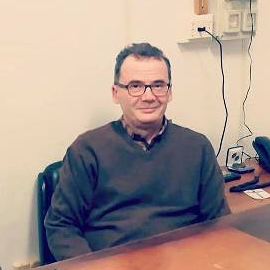Photodynamic Therapy 2.0
A special issue of Biomedicines (ISSN 2227-9059). This special issue belongs to the section "Immunology and Immunotherapy".
Deadline for manuscript submissions: closed (31 January 2024) | Viewed by 10710
Special Issue Editors
Interests: photobiology; photoimmunology; phototherapy; targeted therapies; photobiomodulation; wound healing; basic sciences
Special Issues, Collections and Topics in MDPI journals
Interests: antimicrobial photodynamic therapy; aging and longevity; bioactivity of natural products; biochemical and molecular mechanism; biophotonics; Caenorhabditis elegans model; functional foods; gut microbiome modulation; intestinal health; phytochemicals; probiotics; programmed cell death modulation by chemicals
Special Issues, Collections and Topics in MDPI journals
Special Issue Information
Dear Colleagues,
Dedicating a volume to photodynamic therapy takes on great significance because it means that many steps have been taken to understand that such therapy can take on meaning. In 1903, Von Tappeiner, Director of the Pharmacology Department of the University of Munich, in collaboration with his student, Oscar Raab, demonstrated the therapeutic action of light combined with a photosensitizer and oxygen and coined the term "photodynamic action". Since that time, many studies have experimentally verified the veracity of its effectiveness in different biological structures. In medicine, the use of photodynamic therapy (PDT) is now widely documented and well codified for the treatment of oncological and non-oncological diseases such as macular degeneration of the retina and carcinoma of the esophagus and lung. In dermatology, the use includes oncological diseases such as basal cell carcinoma and squamous cell carcinoma; actinic and non-oncological keratoses; bacterial, fungal, viral, immunological or inflammatory infections in the treatment of chronic wounds; and, finally, in cosmetology for photorejuvenation. PDT is based on the cytotoxic action of some hyperactive oxygen species, especially singlet oxygen but also superoxide anion and hydroxyl radicals, generated by the transfer of energy and/or electrons from the photoexcited oxygen sensitizer. Three important mechanisms are responsible for the efficacy of PDT: (1) the direct death of tumor cells or inflammation, (2) damage to tumor vessels, and (3) immunological response associated with the stimulation of leukocytes and the release of interleukins and other cytokines, growth factors, complement components, acute-phase proteins and other immunoregulators.
After the first successful edition, we are now launching a second volume, "Photodynamic Therapy 2.0". This new Issue continues to cover all aspects of photodynamic therapy including the discovery of new natural and synthetic photosensitizers, biomaterials and nanotechnology, in vitro and in vivo studies and clinical trials. With the collaboration of all of us, this volume will strengthen and stimulate further research.
Dr. Stefano Bacci
Prof. Dr. Kyungsu Kang
Guest Editors
Manuscript Submission Information
Manuscripts should be submitted online at www.mdpi.com by registering and logging in to this website. Once you are registered, click here to go to the submission form. Manuscripts can be submitted until the deadline. All submissions that pass pre-check are peer-reviewed. Accepted papers will be published continuously in the journal (as soon as accepted) and will be listed together on the special issue website. Research articles, review articles as well as short communications are invited. For planned papers, a title and short abstract (about 100 words) can be sent to the Editorial Office for announcement on this website.
Submitted manuscripts should not have been published previously, nor be under consideration for publication elsewhere (except conference proceedings papers). All manuscripts are thoroughly refereed through a single-blind peer-review process. A guide for authors and other relevant information for submission of manuscripts is available on the Instructions for Authors page. Biomedicines is an international peer-reviewed open access monthly journal published by MDPI.
Please visit the Instructions for Authors page before submitting a manuscript. The Article Processing Charge (APC) for publication in this open access journal is 2600 CHF (Swiss Francs). Submitted papers should be well formatted and use good English. Authors may use MDPI's English editing service prior to publication or during author revisions.
Keywords
- antimicrobial photodynamic treatment
- chronic wounds
- inflammatory dermatoses
- photobiology photochemistry
- photochemotherapy
- photosensitizing agents
- skin cancer
- oral mucosa







